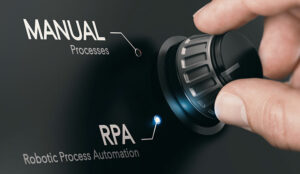How do you lower call centre costs once all the low-hanging fruit has been picked clean? That’s the question call centre leaders across the world have to wrestle with today, as fallout from the COVID-19 crisis forces organizations to do more with less.
These days, automation is promptly prescribed in the recipe for resilience. The call centre has, for a long time, been in dire need of such transformation.
Before we can conclude with a fairy-tale ending, it’s imperative that customer operations leaders avoid costly mistakes and learn how to build reliable models to assess the ROI for call centre automation.
The truth is, call centres don’t need to sacrifice customer experience or service quality in order to cut back on costs.
Using the latest call centre tech, like artificial intelligence (AI) and robotic process automation (RPA), call centres have an incredible opportunity to reduce operational costs, streamline the call centre experience and boost employee productivity.
If you’ve already exhausted all of the usual cost-efficiency suspects, consider how innovative technology can help drive better outcomes within the call centre.
How to Run a Kickass Call Centre Powered by AI and RPA
Thanks to the emergence of AI and RPA, call centres have the tools they need to fundamentally change the way their internal workflows run. With their abundance of manual and time-consuming tasks, contact centres are ideal environments to incorporate AI-enabled automation into everyday processes.
According to Forrester, more than 44% of organizations are already using RPA in some capacity. But there are always opportunities to expand the use of RPA and find new applications for this technology.
RPA can take care of the burdensome work that bogs down contact centre agents and extends the length of customer calls. Here are a few ways to take advantage of AI and RPA and run a leaner, meaner call centre.
Don’t Let Your IVR Limit Your Self-Service
It’s difficult to imagine how today’s call centres would operate without interactive voice response (IVR). These automated systems field incoming calls and help guide customers to the right customer service agent who can address their concerns.
That often involves the caller wading through phone trees, answering a series of clarifying questions and providing background information regarding their particular issue.
Ideally, IVR systems give agents all the context they need to quickly resolve customer issues and move on to the next caller.
Reality doesn’t always play out as seamlessly as that, however. Callers are often asked to repeat information they have already provided through IVR systems, and that does not bode well for the customer experience.
More than 52% of respondents who participated in a 2018 Harris Poll survey said they get frustrated when they have to repeat themselves to customer service representatives.
Enrich your contact centre with multi-experience capabilities to engage callers in the way they prefer, on any modality, at any touchpoint. Offer customers self-service tools to explore available support options and choose the right path for themselves. For instance, visual IVR serves up on-screen customer support when the voice modality isn’t capable of delighting the customer and boosting self-service at the same time.
Customers have the freedom to find quick answers to any questions they have and provide more context to problems before speaking to a call centre representative.
RPA bots seamlessly upload that information directly to an agent’s screen so they can jump right in and solve whatever issue a caller has. It’s simple, it’s fast and it’s easy – everything your customer service should strive to be.
Rather than simply upgrading the technology or redesigning the IVR, look for ways to invest in the IVR and invest around it to ensure we maximize the ROI of call centre automation.
Replace Hold Music With the Sound of Awesome Customer Service
Hold music is something of a necessary evil for call centres. On one hand, hold music fills the silence that would otherwise leave a caller placed on hold wondering if their call has been disconnected.
Hearing the same recording over and over again can be grating, and even the best music can wear out its welcome after repeated listens in a short span of time.
According to a 2020 Genesys survey, 27% of respondents say listening to “annoying messages music and repeated messages” is one of the most irritating parts of customer service today.
Robotic desktop automation, also known as attended RPA, streamlines call centre workflows so customers aren’t left on hold listening to the same recording over and over again. RPA bots accelerate, simplify and improve a wide variety of call centre processes:
- Transfer customer-provided information directly to agents so callers aren’t asked to repeat themselves.
- Automate decision trees and simplify the day-to-day workflows agents manage.
- Monitor agent activity to spot decisions that veer away from best practices and may not serve the client’s best interests.
- Detect the customer’s intent in real time even as their conversation with the agent evolves over the chat channel or the voice channel.
- Deliver actionable guidance to agents and automate manual tasks proactively, by leveraging real-time intent from advanced real-time speech to intent analytics and applying real-time attended automation on the agent desktop to provide quicker and more effective support.
With lightning-fast support that delivers immediate answers and exemplary customer service, who needs hold music?
Make After-Call Work a Thing of the Past
Agents can spend a lot of time creating summaries of their calls to document specific interactions, customer feedback and other important details that might not come through in transcription software.
Although necessary for creating the best customer experience possible, this kind of after-call work is extremely time-consuming, burdening stressed-out call centre representatives who are already under a lot of pressure.
RPA bots automate numerous follow-up tasks after a call has ended, easing the strain on agents and giving them more time to devote to customer support.
Demystify the ROI for Call Centre Automation
The typical call centre has an enormous amount of waste and inefficiency lurking below the surface, leading to long handle times, excessive error rates and higher operating costs.
Bolstered by RPA and AI, sophisticated call centre automation cuts down on unnecessary tasks and processes that make the customer experience feel like a long slog through endless menus and déjà vu-tinged conversations.
After implementing Jacada’s call centre automation tools, our customers were able to lower the average call time from nearly 8 minutes to just over 5 minutes, while bringing their agent error rate down to 1%.
Between the reduced call deflection rates, average handle times, error rates and agent training demands, those customers improved operational efficiency by at least 30%.
In terms of dollars and cents, a contact centre with 1,000 agents can expect to save $18 million a year from those efficiency gains.
This new story has been re-published by kind permission of Jacada
Author: Robyn Coppell
Published On: 27th Jul 2020 - Last modified: 30th Sep 2022
Read more about - Guest Blogs, Jacada















